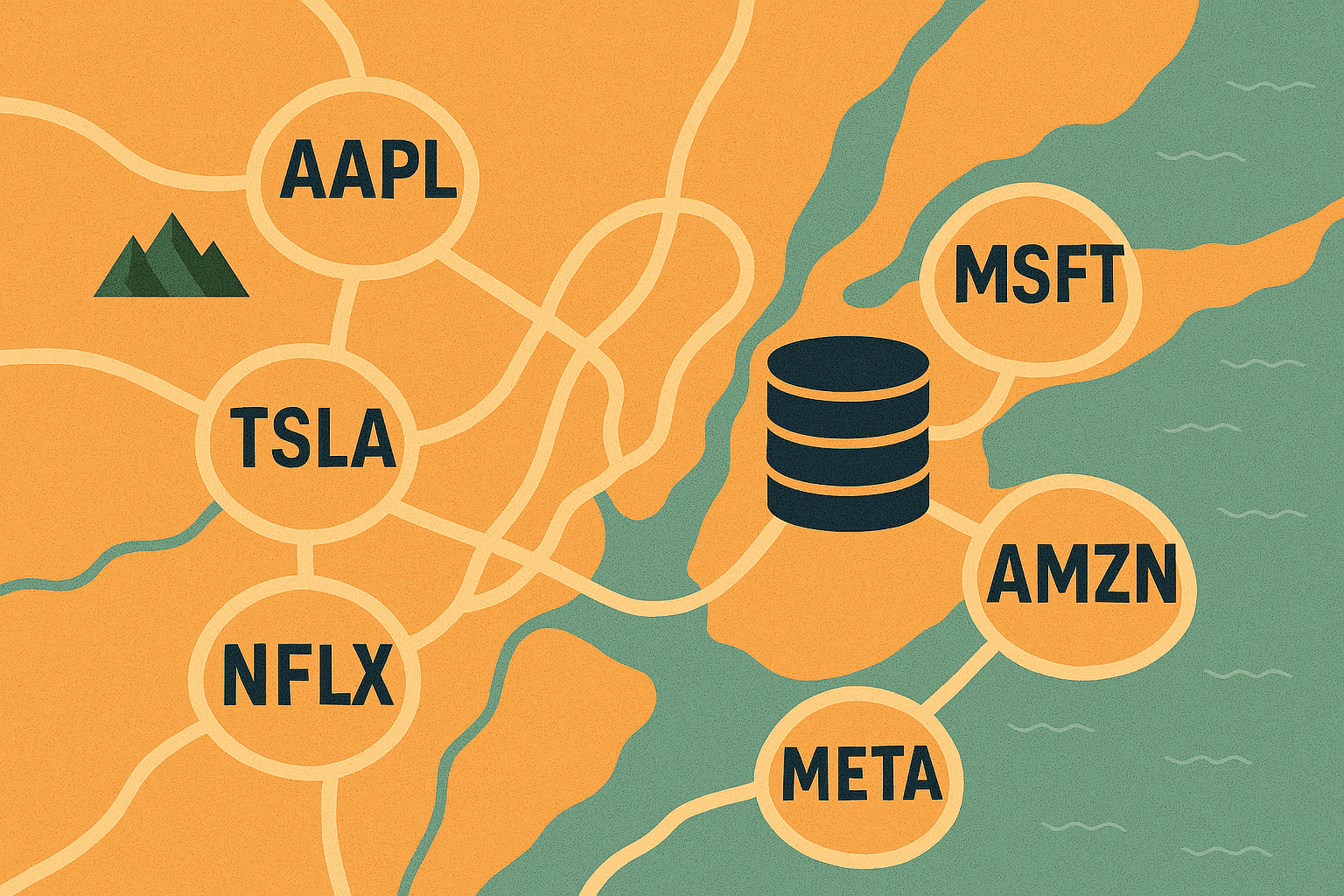Point-in-Time for Alternative Data is crucial in ensuring the accuracy and relevance of financial analyses. This introduction explores how this data type maintains the integrity of historical records, supporting robust investment strategies and quantitative research. Dive into the specifics of how point-in-time for alternative data provides actionable insights in the financial sector.
What is Point-in-Time Data?
Point-in-time (PIT) data captures specific information at a distinct moment, offering a precise snapshot as opposed to time series data which tracks changes over intervals. According to S&P Capital IQ, PIT data, marked with the date of a company’s disclosure, preserves the accuracy of historical data by avoiding biases from subsequent revisions. Conversely, non-PIT data often replaces original figures due to updates or errors and is usually marked by the fiscal period’s end.
S&P Capital IQ notes that while time lags can be applied to non-PIT data to reduce biases, this can lead to inconsistencies due to varying filing times and regulations globally. Their research highlights the challenges in using time lags to simulate PIT data, emphasizing the complexities of accurately representing financials as they were known at the original reporting time.
Example 1:
Taking Chinese technology company ZTE Corporation’s fiscal quarters as an example, S&P looked at restatements causing changes in common ratios such as return on equity (ROE), gross margin, net income margin, and the Altman Z-score. Figure 1 below shows ZTE’s stock price and the quarterly net diluted earnings per share (EPS) using two versions of fundamental data, S&P Global Market Intelligence Capital IQ Premium Financials (which are PIT in nature) (CIQ PIT) vs. latest financials. In July 2018 ZTE restated its Q1 2018 financials to report a net loss. The drop in share price from July 23rd to 30th 2018 was reflected in CIQ PIT’s change unlike the latest reported EPS figure which remained the same between June 2018 to August 2018. Therefore, CIQ PIT EPS is a much better measure when analyzing stock price movement as compared to official figures.

Figure 1: ZTE Corporation – Price, PIT EPS, and Lagged EPS vs. As Of Date (Source: S&P Global Marketing Intelligence)
Example 2:
Figure 2 below demonstrates how restatements impact the percentile ranking of companies based on ROE, indicating the importance of using PIT data for more precise analysis and the limitations of artificial lag approximations in the absence of PIT data. Each dot represents a company’s ROE based on original filings versus the latest ones, with the x-axis reflecting the percentile rank from original results and the y-axis representing the percentile rank from the latest results, considering restatements if any. The further away dots are from the 45-degree line, the greater the change due to restatements.

Figure 2: LTM Return on Equity – Original Percentile vs. Latest Percentile (Source: S&P Global Marketing Intelligence)
For instance, Ildong Holdings went from a top 5% ranking to the 88th percentile after restatement, potentially influencing investor decisions. Conversely, GUD Holdings shifted from the 92nd to the 27th percentile post-restatement. The text emphasizes the significance of using Point-in-Time (PIT) data for accurate analysis, as artificial lags often used in the absence of PIT data may not reflect the true values, particularly crucial in backtesting for screens or quantitative models.
Point-in-Time as a Crucial Requirement for Quantitative Finance and Notes for Data Providers
In quantitative finance, Point-in-Time (PIT) data is essential as it prevents look-ahead bias, ensuring that backtesting reflects only the information available historically. This data accuracy is vital for regulatory compliance and offers a genuine picture of market conditions for strategy assessment. For quants, PIT data is key to developing stable models and conducting consistent analyses that accurately reflect past market dynamics.
Data providers must ensure PIT integrity through robust collection and revision protocols, including timestamping and maintaining data versions. They must manage latency, preserve records of corrections, and ensure redundancy against system failures. Third-party vendor data should be PIT-compliant, and user modifications should be recorded without altering original datasets. As data grows, providers should ensure PIT accuracy is maintained, even in archiving, and provide customers with clear backtesting guidelines. In summary, upholding PIT data integrity is critical for maintaining high-quality datasets crucial for quantitative analysis.
Point-in-Time For Alternative Data and Stock Identifiers
PIT data integrity for stock identifiers like tickers and CUSIPs is vital for reliable historical backtesting. To maintain accuracy, historical records must remain immutable to reflect original identifiers used on any given date. Changes should be timestamped to preserve an accurate historical timeline. It’s critical to separate current from historical data, helping users avoid confusion between active and historical identifiers. A version control system is necessary to track the evolution of identifiers, particularly when tickers are reused for different entities.
Providing reference tables or mapping tools is helpful for users needing to navigate identifier changes over time. Mergers, acquisitions, and corporate actions that alter identifiers require clear documentation and accurate mapping from old to new. Data vendors must also implement robust validation processes, cross-checking against reliable sources and maintaining a feedback mechanism for users to report discrepancies. Regular database audits are crucial to verify PIT integrity. Following these practices ensures that quantitative researchers have a solid, dependable dataset for historical analysis.
Scenarios for Investors Using Point-in-Time For Alternative Data
EventVestor highlights the significance of point-in-time data in investment strategies through examples of corporate event announcements. The scenarios stress the necessity for investors and data providers to proficiently manage and understand this data, ensuring accurate evaluations of market responses to corporate events. Key points include meticulous recording of event-related data, updating investment strategies in response to new information, and the crucial function of data vendors in delivering prompt and precise data for complex investment choices.
The 5 scenarios in which PIT data is crucial for investors highlighted in our recent report are 1) CEO change announcements over various stage, 2) M&A-related data at various stages of the M&A cycle, 3) Clinical trials and FDA approval, 4) Earnings release dates and updates (by companies and by data vendors, and 5) Fiscal period end dates. Below are two shortened examples. To download the full report, please visit this page.
CEO Change Announcements
CEO changes are a pivotal corporate event that can significantly influence a company’s future and market position. Investors closely monitor these events for their potential impact on a company’s strategy and financial performance. Understanding point-in-time data is crucial during such transitions, which can incite market speculation and volatility.
For example, a company announced a CEO change on September 16, 2015, to take effect on January 1, 2016. This period is critical for investors to analyze the potential implications of the new CEO’s policies on the company’s direction. The time between the announcement and data availability from providers also affects trading decisions, especially for those reliant on swift data, such as day traders. Accurate timing and access to historical and real-time data are key for modeling events and refining investment strategies to manage risks and capitalize on market reactions.

Figure 3: Avis Budget Group CEO Changes 2015 – 2020 (Source: EventVestor)
A second example illustrates the market’s response to a multi-stage CEO transition. An initial announcement without a specific departure date creates uncertainty and investor speculation, impacting stock prices. The appointment of an interim CEO provides some clarity, but also suggests difficulties in finding a permanent leader, affecting investor confidence.
When the interim CEO is confirmed as the permanent CEO unexpectedly, it can both stabilize market perception and highlight the company’s internal decision-making processes. This series of events showcases the complexity of modeling point-in-time data and emphasizes the need for investors to carefully track each development for accurate analysis. Each stage—from the initial vagueness to the interim appointment and the final decision—requires investors to adjust their strategies in response to the evolving market conditions.
M&A-Related Data at Various Stages of the M&A Cycle
This scenario highlights the intricacies of M&A activity, particularly emphasizing the significance of the evolution of data through the stages of a deal. Starting with mere rumors, such as the potential acquisition of VMware by Broadcom on May 22nd, 2022, seen in Figure 4, which then develops further with a price tag on May 23rd, 2022, and finally reaches confirmation on May 26th, 2022, each step in this progression carries a different weight for market players. The exact timing when these details hit the public sphere—down to the minute—is of utmost importance for accurate market modeling.
Additionally, the scenario paints a picture of the uncertainty inherent in M&A closure timelines. Companies often provide broad estimations, like expecting a deal to close in “FY 23,” reflecting the unpredictable nature of regulatory approvals from entities like the European Commission and China’s Market Regulation Commission. These approvals are crucial, as they not only influence the closing timeline but also sway stock prices based on the evolving likelihood of deal completion.

Figure 4: M&A Activity for VMware from 2022 – 2023 (Source: EventVestor)
Final Thoughts
Tracking real-time events like leadership changes or company announcements helps investors make informed decisions without bias, leading to more reliable strategies and models. For those who provide data and for investment firms, ensuring the precision and truth of this data is not just about being correct; it’s about maintaining real value and trust in financial analysis within the fast-moving global environment.
Join us for the upcoming Alternative Data Conference on May 16th in London, bringing the investment and data community together in one place. Topics to include AI applications in data management, technical showcases, talent trends, and compliance discussions with speakers from Microsoft, BlackRock, and Schulte Roth + Zabel, among others. Register your interest here.





